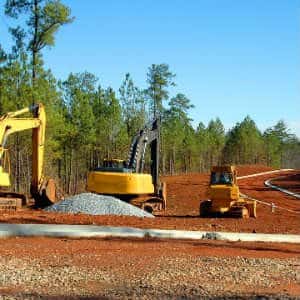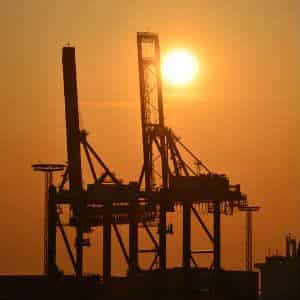The New York City Council’s Committee on Housing and Buildings has taken the first steps many consider necessary to keep construction workers in the state safe by approving six new safety bills. There are still fifteen other proposed bills that will be reviewed and debated.
The Six Approved Bills
Over the past two years, thirty-one construction workers have been killed on the job and in each case, the death could have been prevented if safety standards had been followed.
The fact is, the construction industry is more lucrative than ever and spending has hit an all-time high. You would think that with their success the owners of construction companies would invest in 
In response to the fact that there has been an increase in the number of on the job injuries and fatalities, the following safety bills were approved:
- Two bills regarding reporting requirements. These bills will now require the NY Department of Buildings to notify OSHA of any safety violations that are possibly endangering employee safety. Not only must OSHA be informed, but regular updates must be given to the Mayor and Speaker of the City Council. In addition to this, the information that must be provided has been expanded, requiring additional details in the report and if the responsible party fails to make a report, a fine of $2,500 will be issued.
- Three bills regarding crane operations. All mobile cranes must now be equipped with a GPS that is powerful enough to transmit the machinery’s location to the DOB. If a GPS is not placed on the crane, then the DOB must be notified whenever a crane arrives and departs from a construction site. All cranes must now be equipped with an event data recorder that collects information on:
-
- The crane’s configurations.
- Overload condition.
- Limit switches statuses.
- Operator overrides.
- The sixth bill requires that anyone who is performing construction on a building that is more than four stories tall hire a construction superintendent and create a safety plan for that site.
Construction workers throughout the state are hopeful that after a careful review, the additional fifteen safety bills will be approved.
Will These Bills Actually Help?
While it’s wonderful that the dangers that construction workers frequently face are finally being taken seriously, another issue that needs to be addressed is how these safety standards will be enforced.
OSHA, which is the administration that is called in whenever there is a potential safety issue or if a serious injury or death has already occurred at a work site, only employs around 2,100 inspectors. This means that there is 1 inspector for every 59,000 workers, a number that makes it impossible for every single job site to inspected yearly.
Since their resources are spread so thin, the administration issues a priority level to every complaint. The priority levels are as follows:
- Imminent Danger Situations: This is when the administration has been informed that a safety issue at a workplace could result in a serious injury or death if not rectified immediately.
- Severe Injuries / Illnesses: Whenever an employer learns of a work-related death or if one or more employees have been hospitalized, sustained an amputation, or the loss of an eye, the employer must file a report with OSHA within 24 hours so that an investigation into what caused the injury or illness can take place.
- Workers’ Complaints: If a worker chooses to file a complaint, even anonymously, this will be a priority level 3.
- Referral: Sometimes OSHA is referred to review a workplace by another federal, state or, local agency.
- Targeted Inspections: These inspections typically take place at a job site where the administration had previously received a complaint or an injury took place.
- Follow-ups: When a citation is issued the administration will send someone to make sure that the necessary corrections were made.
Can An Employee Be Fired For Filing A Complaint?
No. Whistleblower laws are in place which protects any employee who files a complaint against their employer. OSHA keeps the identity of anyone who files secret and if the employer somehow manages to identify that employee and punish them by ending their employment, OSHA will help.
Why Are There So Many New Crane Restrictions?

Just one year ago, Mayor de Blasio announced that a technical group had been hired to review and make improvements to crane safety in the state after a crane that was being lowered collapsed, killing a man who was sitting in his car, injuring several others, and causing structural damage to numerous buildings.
Sadly, instead of getting on board with improved safety, several construction groups chose to file a lawsuit against the DOB, saying that new restrictions would unfairly hurt businesses. However, as a DOB representative said “The city’s crane rules are there to protect people’s lives. We look forward to reviewing this action and are confident we will prevail.” It appears with these latest approvals, they have indeed prevailed.
What If I Was Injured On A Construction Site?
If you sustained a serious injury while working on a construction site, you do have ways to obtain compensation.
First, NY requires almost all employers to have workers’ compensation insurance. This insurance should pay for any medical expenses that directly related to the on-the-job injury and may even provide a portion of lost wages. Unfortunately, a shockingly large portion of these claims are denied or the payouts miscalculated.
If the injury that was sustained is career-ending, the worker may be eligible to file a claim for Social Security Disability. You can learn more about that process here.
In addition to these claims, an experienced attorney can identify if a third-party was responsible for the accident which caused the injury. If this is the case, it may be possible to file a personal injury lawsuit against the responsible party, which may provide compensation for medical expenses, lost earnings, emotional trauma, and physical pain and suffering.
How Long Does It Take To Get Compensation?
If a worker consults an attorney as soon as possible, the attorney can help them fill out all claim forms appropriately, reducing the chances that they will receive a denial. If the initial application is accepted, payments may be received within a few weeks.
When it comes to personal injury lawsuits, it may take months or even more than a year for the case to resolve, however, the compensation is usually what a client needs to stay financially safe.
What Information Will I Need To Provide?
In most cases the following information will help prove your claim:
- photographs of the scene of the accident
- photographs of the injuries – try to take pictures over time to show the progression and how it has impacted you
- medical records
- all paperwork that has been sent by insurance companies
- bills that have resulted because of the injury
Our team will let you know if there is any other information that may be helpful and we can assist you in obtain these records if needed.
